For five years, tiny figures in hazmat suits have been visible on the scaffolding around Cathédrale Notre-Dame de Paris, like Lilliputians swarming over Gulliver’s body. Sometimes one spotted a slab of limestone or a giant roof truss suspended in the air above the cathedral, about to be implanted.
The men and women who have laboured over Notre-Dame since the fire of April 15th, 2019, speak of the cathedral as of a female patient, in terms of wounds, pathologies, scars and healing. Her scheduled reopening in less than six months’ time is hailed as a rebirth.
Her. She. La Cathédrale. To the French, not only the word is of feminine gender. So is the edifice itself. Louis XIII promised to dedicate his kingdom to Our Lady if she gave him a male heir. The birth of the future Louis XIV, who became France’s longest-reigning monarch, in 1638, after 23 years of marriage, was attributed to the Virgin’s divine intervention. In the minds of the Bourbon monarchy, She, they and the Church comprised a single entity.
Former armaments engineer Philippe Jost took charge of the restoration of Notre-Dame when his boss, General Jean-Louis Georgelin, died last year. “If you ask me what I have felt on the construction site, it has been much more a series of great moments of happiness than difficulties,” Jost says. “You forget the difficulties, and the happy moments remain.”
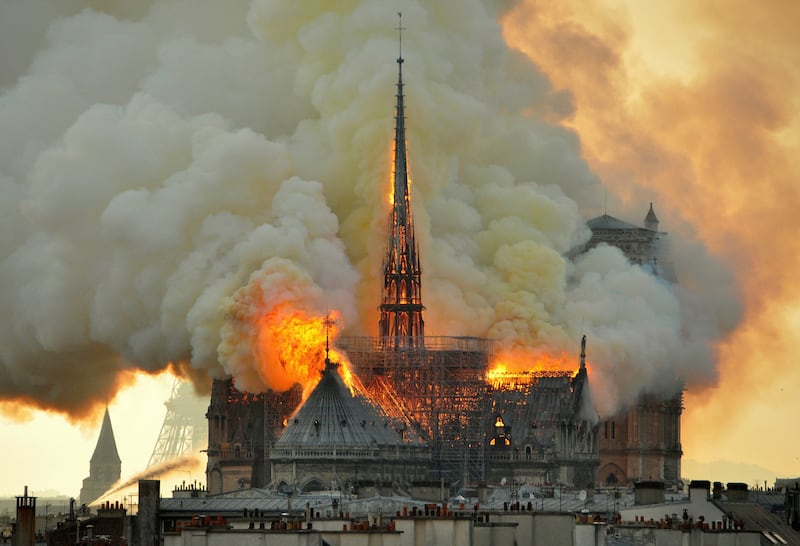
The cathedral will not be ready in time for the July 26th-August 11th Paris Olympics, as Paris mayor Anne Hidalgo wanted. “At the time of the Olympic and Paralympic Games, the spire, most of the roof of the nave and choir, the entire facade of the southern wing of the transept with its great rose window, will be clearly visible,” Jost says.
The oak-timbered medieval roof known as “the forest” and the 96-metre spire built by the medievalist architect and designer Eugène Viollet-le-Duc in the mid-19th century were incinerated in the fire. Viollet-le-Duc had carried out the previous large-scale restoration of the cathedral.
To remove lead dust and centuries of grime, the cathedral’s interior was sprayed with latex which dried and was peeled off to reveal blond limestone. Stained-glass windows have been painstakingly cleaned. The result is breathtaking; a cathedral more beautiful than at any time since her construction.
Philippe Villeneuve, the chief architect of Notre-Dame since 2013, became obsessed by her as a child and knows her as no one else does. Like Jost, Villeneuve is a practising Catholic in his early 60s. All resemblance ends there.
Jost is an earnest representative of French officialdom. His careful, polished speech never strays into anything remotely controversial. Villeneuve is a self-avowed eccentric who uses slang and swear words. He regards Viollet-le-Duc as his “spiritual father”, and chafes at the authoritarian ways of the public establishment headed by Jost.
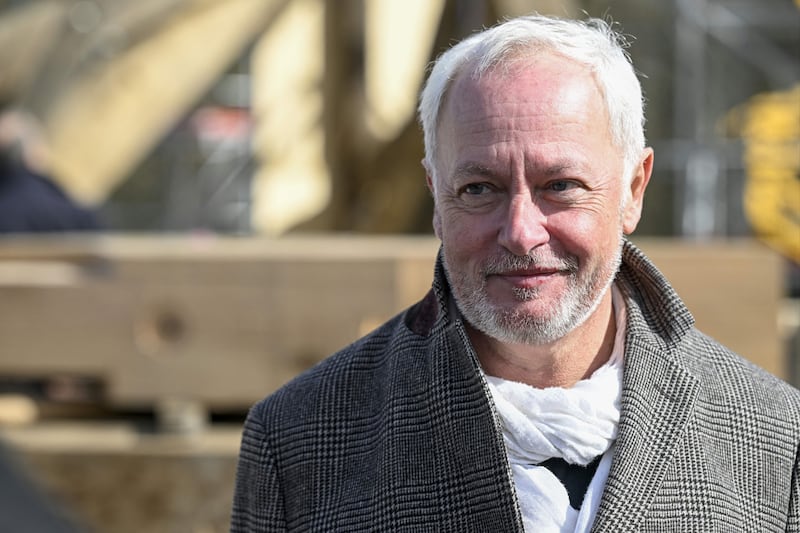
Villeneuve had one of the cathedral’s rose windows tattooed over his heart before the fire. He has since covered his torso, shoulder and arm with Notre-Dame tattoos, including the cathedral’s floor plan and spire. “This is a declaration of love for my cathedral. She is under my skin. She will never leave me.”
The process of transition from securing the cathedral to actually restoring her marked a turning point in September 2021. “At last, we had stopped tending the cathedral’s wounds and we were rebuilding,” Villeneuve says. “We weren’t scared any more. The cathedral couldn’t collapse on us. We had saved her.”
Jost and Villeneuve both cite completion of the spire and the final closing of the ruptured vaulted ceiling as their happiest days on the site.
I spend three hours at Notre-Dame for my visit. After donning hazmat suits, galoshes and hard hats, we take a lift to the roof, where the spire rises before us, carved in oak and being clad in lead sheeting, complete with the curlicued ornaments and chimeras drawn by Viollet-le-Duc.
President Emmanuel Macron’s call for a “contemporary gesture” in the reconstructed roof and spire prompted such far-fetched proposals as a rooftop garden, swimming pool and solar panels. After bitter debate, it was decided to restore the roof and spire exactly as Viollet-le-Duc had left them.
Macron sparked renewed controversy last December 8th, one year before the scheduled reopening, when he ordered the replacement of windows in six of seven chapels on the south side of the cathedral with contemporary stained glass. The windows were designed by Viollet-le-Duc and survived the fire. Macron wants to send them to a museum.
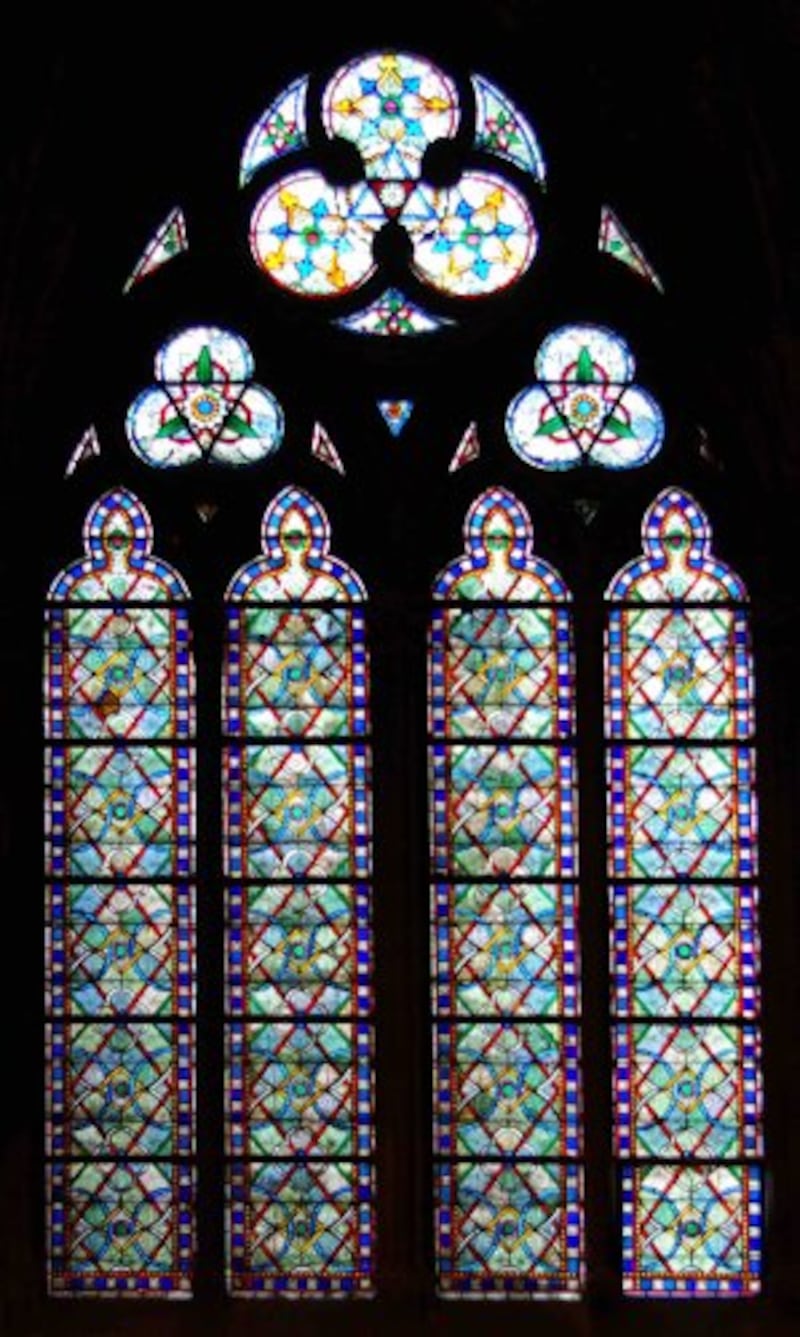
Didier Rykner, founder of the Tribune de l’Art magazine and author of Notre-Dame: An Affair of State, says the windows are an integral part of a protected building and cannot be removed under the 1964 Venice Charter and the 1994 Nara Document on Authenticity, which France adhered to.
“Who gave the head of state a mandate to alter a cathedral that does not belong to him, but to everyone?” says a petition drafted by Rykner. “Emmanuel Macron wants to put the stamp of the 21st century on Notre-Dame de Paris. Perhaps a little modesty would be preferable. We won’t be so cruel as to point out that this mark already exists: the fire.” More than 140,000 people have signed the petition.
Macron threw French politics into turmoil this week by calling a snap election for June 30th and July 7th. The final stages of the cathedral’s restoration should not be affected, but if the far right National Rally names the next prime minister, the controversial replacement of some windows could well be cancelled.
In the heart of the “forest”, we breathe the scent of freshly sawn oak. I interview Hank Silver, a New England carpenter and member of Carpenters without Borders, whose French associates invited him to join the project. Silver could hardly believe his good fortune. “I am never going to have anything like this again in my life,” he says.
Silver leads us to the easternmost end of the roof, to show us the apse. Wooden beams extend in a half circle from the keel, like rays of light. “This is a masterpiece of medieval carpentry,” he says. “You can see how it radiates out.”
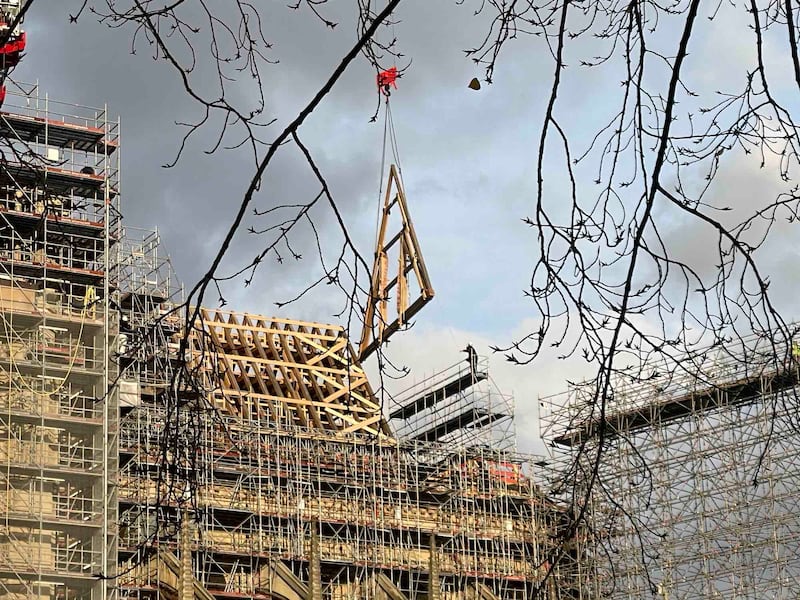
Silver explains how the new roof and spire were assembled first in workshops in Normandy, the Loire Valley and Lorraine, dismantled, transported to the site, reassembled on platforms, and hoisted by cranes. “This is reproduced medieval carpentry,” he says, stroking a beam. “You can see the undulating, rippling surface. Each piece is hand-hewn using tools the original builders would have recognised.”
Silver points out the ends of wooden pegs which hold the rafters together and explains how the pegs are hand-riven from a log without knots, which must be split with a froe and then hand-shaped on a shavehorse. He talks of mortise and tenon joints, clasping, kingposts, struts, stirrups and turnbuckles. “It is a giant wooden puzzle,” he concludes. “There must be a logic to the assembly.”
The only concessions to modernity are metal firebreaks and a misting system intended to drown any future fire.
Back on the ground floor, in a chapel behind the altar, Marie Parent, a restorer of paintings, shows us a 14th century fresco of the Virgin and child and on the opposite wall the Seven Sorrows of the Virgin, commissioned by Viollet-le-Duc.
Like other artists I meet on the site, Parent had worked in Notre-Dame before the fire. “Usually one works alone,” she says. “Now we are all together at the same time, and that is a great pleasure. I am really enjoying the opportunity to work alongside stained-glass artists and restorers of sculpture.”
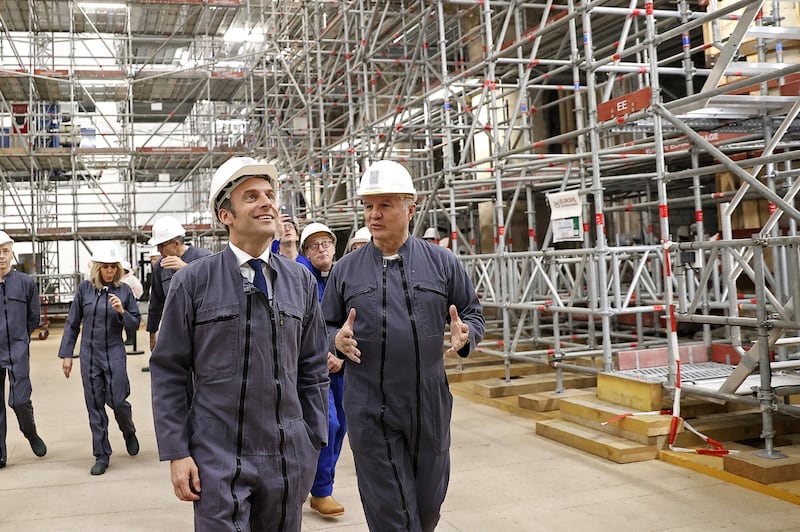
Nathalie Pruha, a sculpture restorer, uses steaming water to clean lead dust from statues. “On the smooth parts it is relatively easy; it just pops out,” she says. “On porous parts it’s more complicated.” Cleaned sculptures await the reopening shrouded in white tarpaulins.
Pruha’s favourite is Nicolas Coustou’s 1723 Pietà, the centre of an ensemble called The Vow of Louis XIII. “I had worked on her before the fire,” she explains. “You cannot help loving the one you know best.”
A sculptor called Stéphane has spent the morning restoring chimeras on the pinnacles of flying-buttresses. He uses lime mortar to fix protective strips on damaged sculptures. “If a head is missing, we place a new stone at the place of the head, fix it with a dowel and resculpt a head.”
Stéphane particularly likes the vegetal embellishments designed by Viollet-le-Duc. “People talk a lot about chimeras and gargoyles, but there is also a lot of foliage. All that is coming back to life,” he says.
The cockerel that topped Viollet-le-Duc’s spire was badly damaged in the fire, but the treasures that were stored inside it – a piece of the Crown of Thorns and relics of Saints Denis and Geneviève – were put in the cavity of a new gilded cockerel designed by Villeneuve.
Villeneuve says it was his idea to insert a scroll bearing the names of everyone involved in the reconstruction of Notre-Dame, from the project manager to security guards and canteen ladies, more than a thousand people. Last December, the cockerel was blessed by the archbishop of Paris and hoisted to the top of the new spire.
“The cockerel’s raised wings cross at the top, like flames of the fire, but they could also represent the Holy Spirit,” says Villeneuve. “In fact, it’s more a phoenix, because the message is that Notre-Dame rose up from the ashes.”
The great and good of France will gather for Mass next December 8th, the Feast of the Immaculate Conception, to celebrate the reopening of Notre-Dame more than five and a half years after she was nearly destroyed by fire.
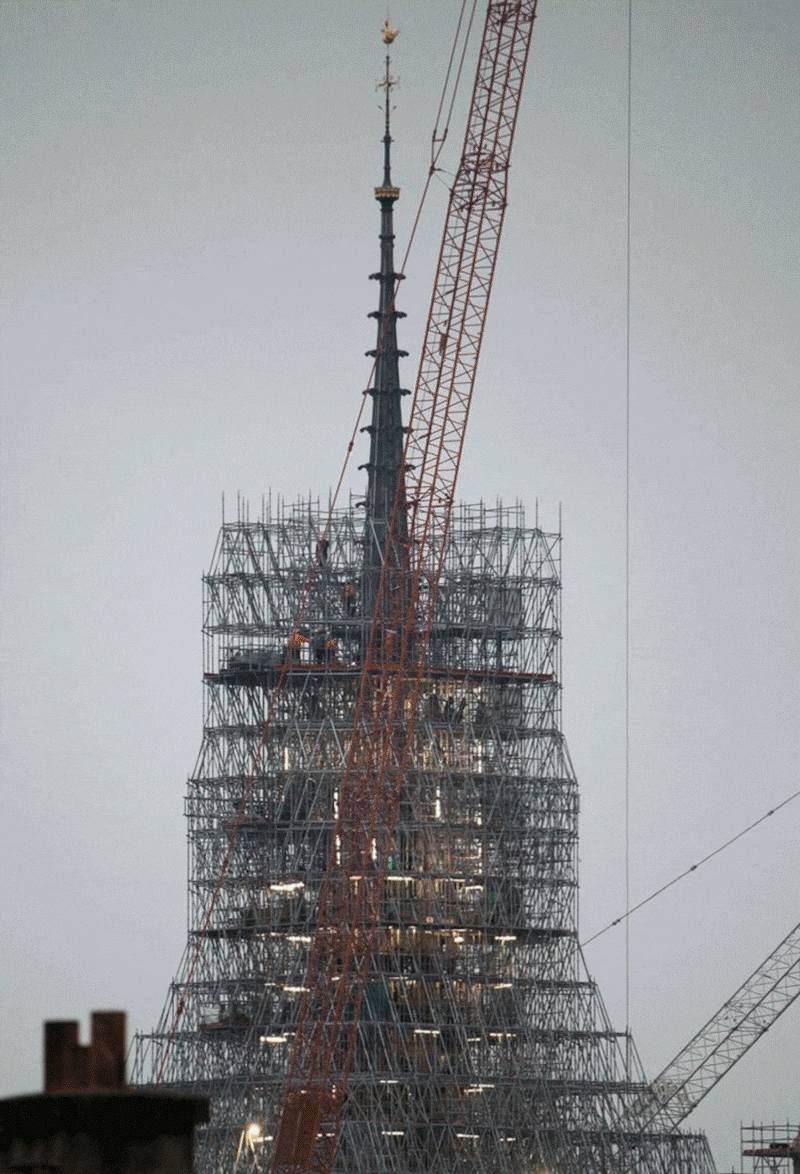
However, one of the main protagonists of the resurrection saga, the man who President Emmanuel Macron referred to as “the cathedral general”, will be absent.
Macron had appointed General Georgelin, former chief of staff of the armed forces and former grand chancellor of the Legion of Honour, to oversee the reconstruction of Notre-Dame. Georgelin died in a hiking accident in the Pyrenees in August 2023 at the age of 74.
I interviewed the general, a larger-than-life figure who thundered and roared, gesticulated and feigned ill humour with the verve of a stage actor, between Covid lockdowns in 2020. I asked him about the dark mood in France following a series of catastrophes that included jihadist massacres and the fire at Notre Dame.
Georgelin scoffed at “this theory that the world is in trouble”. The Great Plague and the first World War were far worse, he said. The French needed to buck up.
At Georgelin’s funeral at Les Invalides on August 25th last year, Macron recalled how the general’s voice “always preceded him by a few metres. On the site of the reconstruction of Notre-Dame de Paris, it cleaved the air... It drowned out the noise of the tools and the din of the craftsmen. At the Élysée Palace, that voice could be heard in the main courtyard, when the General opened his window in summer.”
Georgelin, a devout Catholic, was delighted to learn that his office at the Élysée had once been a chapel.
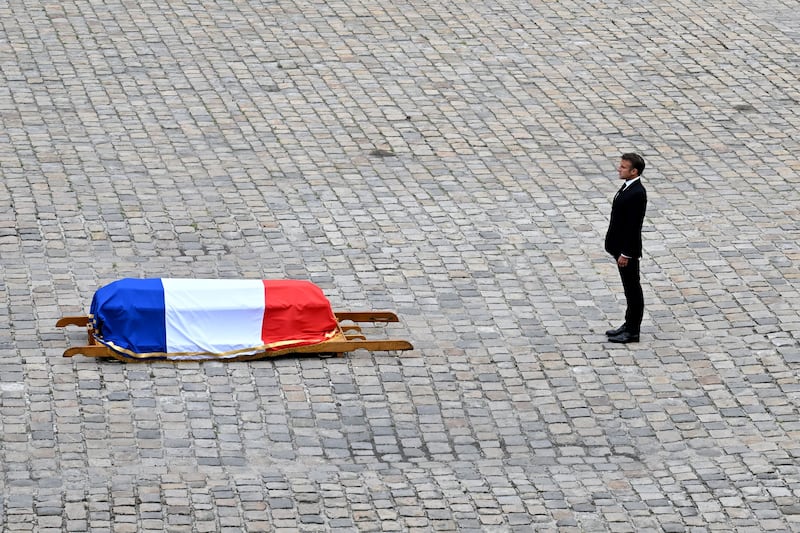
Villeneuve, chief architect of Notre-Dame, resents assertions that the five-year deadline set by Macron for rebuilding the cathedral could not have been met without Georgelin. “The essential piece on a construction site is the architect,” – not the project manager – Villeneuve said.
Villeneuve nonetheless “ended up liking the General, because he knew his own limits. He impressed people with his theatrics, but he saw that I wasn’t impressed, and we just played at the authority game.”
Georgelin was succeeded as president of the public establishment in charge of the conservation and restoration of the cathedral by Jost, his right-hand man during the first four years of the reconstruction. At Georgelin’s funeral, Jost made what he called “a solemn, collective pledge” to complete Georgelin’s mission.
“We had confidence in each other and co-operated extremely well. I have great memories of him,” Jost said. “Would we have met the challenge of rebuilding the cathedral in five years without him? No, because one of the most important things he brought to the project was his will and determination. He had a very strong presence… He imposed his presence with his booming voice… He tested his interlocutors… He had a sense of humour. There was his voice, and there was also his laughter.”
- Sign up for push alerts and have the best news, analysis and comment delivered directly to your phone
- Join The Irish Times on WhatsApp and stay up to date
- Listen to our Inside Politics podcast for the best political chat and analysis



















